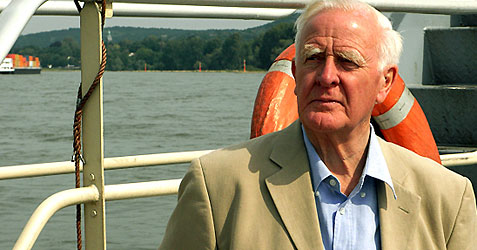Drink of the Week: The Quiet Man (TCM Fest Salute #3)
 This is part three of our salute to the TCM Classic Film Fest (see parts one and two here and here). This week, a quandary was solved by my realization that the annual double-act of drinking related arguable holidays, Derby Day and Cinco de Mayo, are just about upon us, though I’m afraid the Mexican-American holiday is going to get short shrift este año.
This is part three of our salute to the TCM Classic Film Fest (see parts one and two here and here). This week, a quandary was solved by my realization that the annual double-act of drinking related arguable holidays, Derby Day and Cinco de Mayo, are just about upon us, though I’m afraid the Mexican-American holiday is going to get short shrift este año.
I was struggling with another drink when it occurred to me suddenly that the film I’d planned to cover the final week of my salute, John Ford’s ultimate two-fisted romantic comedy, “The Quiet Man,” was also perfect for the annual running of the Kentucky Derby. That’s because, like nearly all John Ford films, strong drink features prominently and there’s an exciting horse race scene, though it tends to overshadowed by the film’s legendary fistfight between leading man John Wayne and comic antagonist Victor McGlaglen.
Directed by America’s cinematic Shakespeare, John Ford, and written by his frequent undersung collaborator, the great Frank S. Nugent, “The Quiet Man” is a tale of a guilt-ridden Irish-American boxer (Wayne, of course) who escapes to the old sod after accidentally killing a man in the ring. He finds true love of a very feisty and sexy sort with a very feisty and sexy young clan matriarch (O’Hara, naturally). The twist is that, thanks to the selfishness of her thuggish older brother (McLaglen), he also finds that the only thing that will save his new marriage is practicing the not-at-all-so-sweet science of fisticuffs. It’s also a comedy, made back when you didn’t have to label a film a “dramedy” just because it has a few serious moments and a decent story.
Since the film is the ultimate celebration of the rather intimate connection between Ireland and the U.S., as well as between man and woman and fightin’ man and fightin’ man, a drink that unites the sweet whiskies of Ireland and the U.S.A. while packing a slow punch seems appropriate. It’s also appropriate to admit that absent or two very minor variations, it’s a total rip-off of the Derby Day classic, the Mint Julep. Still, I think it’s a maybe a nice change of pace.
The Quiet Man
1 1/2 ounces Old Fitzgerald Kentucky Straight Bourbon Whiskey (Bottled in Bond)
1 1/2 ounces Bushmills
1 teaspoon super fine sugar
5-8 fresh mint leaves
1 teaspoon (or maybe 1/2?) Campari or Aperol
Start with the sugar and mint leaves and, if you’re feeling quirky, the Campari or Aperol bittersweet liqueur. Muddle the mint leaves with the lightest of touches in the bottom of a rocks glass. Next, add your twin whiskeys, many smallish ice cubes and stir enough to really get things nice and icey.
As for our toast…let’s see, we’ve got John Wayne, horse racing, Maureen O’Hara, John Ford, the Marquis of Queensbury, Frank S. Nugent…Yeah, that’s it. Frank S. Nugent. It could be the first time a screenwriter who never became a director was toasted by the public, though it sure wouldn’t be the the first time a screenwriter got toasted.
****
I have to admit I don’t feel like I quite finished the job on this drink as far as the Campari or Aperol are concerned, which I added for a bittersweet edge. I was tempted to write that you could leave them out entirely, but I wasn’t too happy with that version, either. Try one, or the other, or maybe experiment with another liqueur choice of your own. I like this drink, but it’s a work in progress.
I feel a bit more satisfied with my choice of brands, which this week I’m making a part of the official recipe. Old Fitzgerald Bourbon definitely has the right Irish ring to it, and it’s also a wonderful, underrated product that you can actually afford. Moreover, the fact that it’s 100 proof ensures that a Quiet Man really will pack just a bit more punch than a standard julep.
As for Bushmills, I’m sure Jamesons or another Irish whiskey would do and I won’t even get into the silly “Bushmills is protestant whiskey” argument. In any case, “The Quiet Man” depicts an ecumenical mid-century Ireland where Roman Catholics and a tiny minority of Church of Ireland believers get along quite famously.
Really, though, the surest way to ensure that you have a really good time with this drink is to actually enjoy it while watching the brilliant 2012 4k restoration of “The Quiet Man,” which you can do via Amazon or, right here below. I think springing for the HD version makes sense here. You’ll see.
You can follow us on Twitter and Facebook for content updates. Also, sign up for our email list for weekly updates and check us out on Google+ as well.
Posted in: Food & Drink, Lifestyle, Movies, Vices
Tags: Aperol, Bushmills Irish whiskey, Campari, cocktails, Derby Day, Drink of the Week, Happy Hour, John Ford, John Wayne, Kentucky Derby, Maureen O'Hara, The Quiet Man, Victor McLaglen











